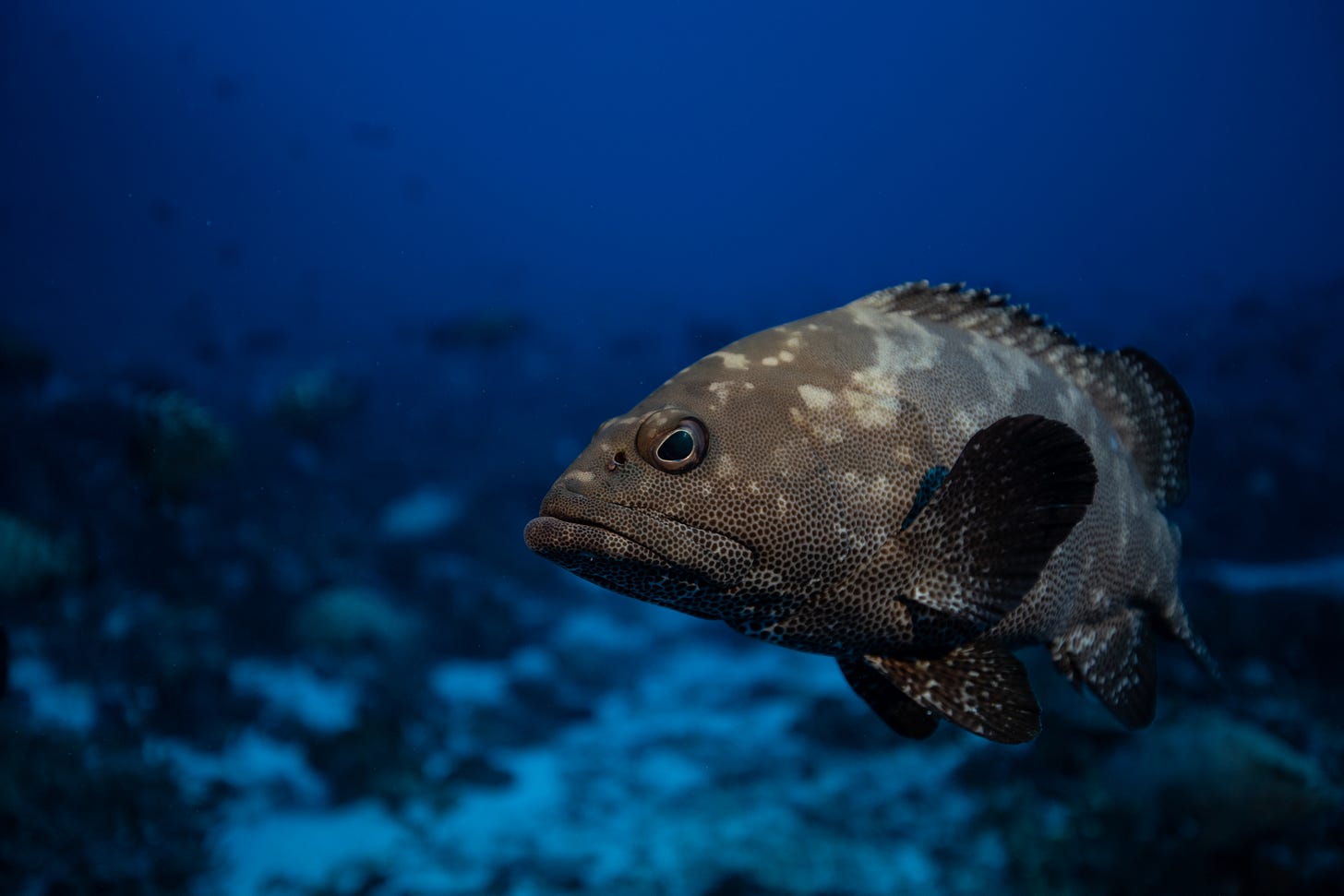Overcrowded orcas, dolphin poo analysis, and tools made from whale bones
Big Blue Bulletin #54
Welcome to the latest edition of the Big Blue Bulletin – things have changed just a little bit around here as featured stories will now focus on whales, dolphins, and porpoises, with a little bit of commentary from me thrown in as well. Still, you can expect good news, bad news, and a cute creature in your inbox every Friday.
Let’s dive in 🐬
Ocean news
🗞️ Big news of the week -
🦴 Scientists discover the oldest known tools made from whale bones
Incredible new research has revealed that early humans were making hunting tools from whale bones up to 20,000 years ago. This is the oldest known example of cetacean bone tools ever found.
Archaeologists reanalysed 83 tools previously excavated from caves along the Bay of Biscay, using collagen analysis to determine the animal species. More than 70 turned out to be from ceteaceans, with the majority coming from sperm whales, but also fin, blue, grey and possibly right or bowhead whales.
The bones likely came from stranded whales scavenged by coastal hunter-gatherers. The tools were mostly spear and projectile points, used to hunt animals like reindeer and bison inland. It’s the strongest evidence yet that our ancestors weren’t just surviving off land-based resources, but were also closely connected to the sea.
🐋 Public urged to keep distance as dead minke whale washes up on beach
A minke whale has washed up on Portstewart Strand in County Londonderry, prompting the National Trust to urge visitors to keep their distance while agencies assess next steps to remove the carcass.
Among the first to see the whale was six-year-old Caitlin, who was visiting the beach with her family. “It’s very big and we can see his teeth,” she told the BBC, adding that she hoped the whale could be buried on the beach with a “wee cross” so she could come back and visit.
Minke whales are one of the smaller baleen whale species, but can still reach up to 10 metres long and weigh 9,000kg. While the cause of death isn’t known, strandings can result from illness, injury, storms or simply becoming lost in shallow waters.
🇲🇽 ‘Swimming with orcas is out of control’: can new rules keep tourists and Mexico’s whales safe?
In Baja California Sur, the number of tourists entering the water with wild orcas has surged in recent years and conservationists are worried.
What began as a niche wildlife experience has now drawn dozens of boats to the waters off La Ventana, a small coastal village, where spotter planes and tour guides coordinate to deliver close encounters.
Around 40 vessels operate during peak season, some local, others foreign-owned, and not all are properly licensed. Many promise tourists the chance to enter the water with orcas, a practice that exploits loopholes in Mexican law which aim to protect endangered marine wildlife.
As footage of swimmers and free-divers circulates on social media, experts warn that the activity is putting pressure on the animals and creating safety risks for people. Some operators are now calling for clear rules to limit numbers and keep both whales and tourists safe.
💩 Dolphin 'mysteries' to be solved by collecting poo
Conservationists in Wales are turning to dolphin poo to uncover new insights about the resident bottlenose population in Cardigan Bay.
Roughly 200 bottlenose dolphins are thought to live in the area but mystery remains around their relationships, movements and feeding habits.
Now, researchers are collecting faecal samples (using a net) to analyse environmental DNA (eDNA) and better understand what individual dolphins are eating and where. They hope to match the findings with existing photo ID records to build more complete profiles of the animals and hopefully to better inform future conservation work.
🔊 Dolphin ‘signature whistles’ may transmit more than just identity information
New research suggests that dolphin “signature whistles”, long known to function like names, could be transmitting more than just identity.
These individually unique calls, developed early in life and maintained across the dolphins lifespan, are often used during social interactions. But scientists have now found subtle variations in how the same dolphin uses its whistle, hinting at a deeper complexity to the sounds.
The team behind the study says these whistles might be more like human faces than names — stable enough to identify the individual, but flexible enough to convey emotion or context through small changes.
Have a great weekend! 📸
Cover image by Andrea Izzotti.





A contrast in maturity: Sensitive Caitlin, 6 yo, hoped the whale could be buried so she could come back and visit, versus thrill-seeking tourists splashing around with orcas. I confess to fantasies of orcas feasting on humans. Sorry.
Thanks for sharing. That thing about dolphins' whistles... it's blowing my mind. I just love what it says about our relationship with the natural world. Just when you think you're starting to understand something you look a bit closer and discover there's layers upon layers upon layers.